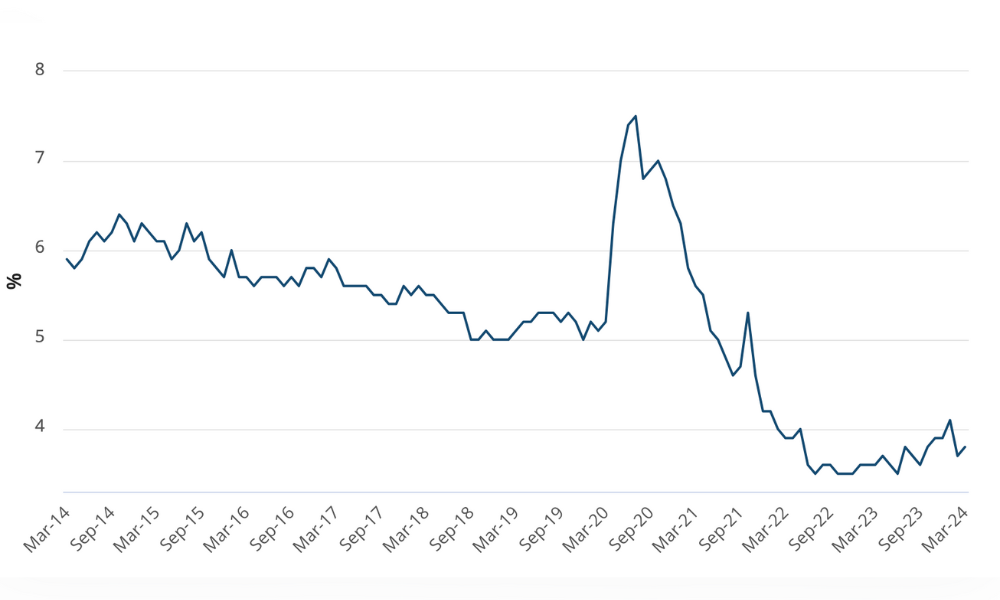Why do people find it so hard to change, or resist change even when it might be good for them? The answers can be found in the brain itself, as Sonia McDonald reveals
Why do people find it so hard to change, or resist change even when it might be good for them? The answers can be found in the brain itself, as Sonia McDonald reveals
As leaders, we are constantly driving and facilitating change, yet research in this area has demonstrated that 70% of change initiatives fail. Why? How can we make change easier and more successful? The neuroscience of change, and understanding how our brains function, is vital to managing and coping with change.
BRAINS ARE WIRED FOR SURVIVAL
Our brain functions as a survival tool by helping us avoid danger. A part of the brain called the amygdala helps monitor our responses and tells us when to run from danger or towards safety. It also tells us when to step towards a benefit or away from a threat.
When change is happening around us in our society, relationships and workplaces, we can feel threatened, and that activates our amygdala. We feel outside our comfort zones, triggering fear and anxiety.
While this is good for our safety, it does come at a cost. When our brain is in safety mode, protecting us from a perceived threat, it cannot function well as a problem solver or creativity generator. In the workplace, the fear of change causes people to rely on tried and true routines, rather than create new strategies to move forward. In effect, the brain shuts down the part that is really needed at that time.
Basically, the amygdala of your brain has been hijacked and this is not the best time to make an important decision.
Now you see why 70% of change initiatives fail. By understanding how the brain works we can manage change resistance and develop strategies to maximise change potential. Additionally, it gives us insights into how people learn, engage and remember, as well as manage emotions.
BRAINS ARE LAZY
Considering that our brains weigh around 1.5kg and absorb around 20% of our body’s energy, our brains are not particularly energy efficient and are actually pretty lazy. Our brains prefer comfy habits, as these require a lot less energy. They don’t really like to learn new habits or ways of doing things, as this takes effort.
The design of the brain is not always helpful. The part of the brain that is responsible for thinking and high-order processing (the prefrontal cortex) requires a lot more energy to function than does the part of the brain that deals with emotion (the limbic system). That means it’s a lot harder for us to cope with change than to return to our tried and true habits.
How can we break habits and form new ones? In his book The Brain That Changes Itself, Dr Norman Doidge tells us that the brain can be changed by our thoughts and actions. They physically alter the structure of the brain itself, which in turn changes the way it functions. This is the most important breakthrough in neuroscience in four centuries.
This ability of our brain to change and make new connections, rewire itself and even grow new brain cells as a result of experience is called ‘neuroplasticity’. Change is about forming new wiring, habits and behaviours. Yes, we can teach an old dog new tricks!
How can we harness neuroplasticity of change? By tapping into the emotions…
BRAINS ARE AFFECTED BY EMOTION
We know that often our behaviour is controlled by emotion rather than common sense. What that tells us is that the limbic system in the brain has some control over the information that is passed onto the cortex, which controls our decision-making system.
In other words, our thoughts and actions are coloured or skewed by the emotion that we are feeling. You’ve heard of rose-coloured glasses, the phenomenon that makes certain things look better than they really are. That’s an example of the limbic system influencing our beliefs and perceptions.
When people are afraid, as they usually are at the thought of change, our limbic systems colour our perceptions with threat and fear. People only see the negative side of change because that is all their brain permits. If the change is brought about for positive reasons, then people will accept it and be ready to involve themselves in making change happen.
MAKING THE BRAIN WORK FOR YOU
So, we know that our brains are wired for survival, that they are lazy and will take the easiest thought out of there, and that every thought is coloured by emotion. We also know that actions and thoughts can change the physical structure of the brain.
How can we use that knowledge to make the brain lead us towards supporting change rather than running away from it?
There are two key solutions.
First, you can use neuroplasticity to your advantage and provide opportunities for people to develop new thoughts and practise new actions and behaviours, thereby rewiring the brain.
Second, you can make the limbic system work for you by creating positives around change, especially to reinforce behaviour and thought changes.
We need to build organisational change systems that capture the important role of emotions in determining behaviour, particularly in the contexts of engagement, resistance, cooperation, and commitment. What that means in the workplace is that every small step forward needs to be acknowledged.
Change leaders are essentially helping people to develop new connections within their brains. Our role should involve creating opportunities and interventions that give people the chance to trial new behaviours in a safe environment. We should allow them to take the ‘risk’ of doing something uncomfortably new and succeeding at it. The more fun we can build into the experience, the more people will become involved in it.
Positive reinforcement is essential to help embed the new thoughts and behaviours and to show the limbic system that this change is nothing to fear. The more often we can encourage people to repeat the new actions, the more comfortable their brains will allow them to feel. When people are comfortable, their high-order thought processes resume functioning and their creativity and decision-making skills start firing again.
If you are leading change in your organisation you can create the right atmosphere for change by building a safe and positive environment for your team and identifying ways to acknowledge and reward new actions or behaviours.
 Sonia McDonald is the director, LeadershipHQ. To contact Sonia, email [email protected]
Sonia McDonald is the director, LeadershipHQ. To contact Sonia, email [email protected]








